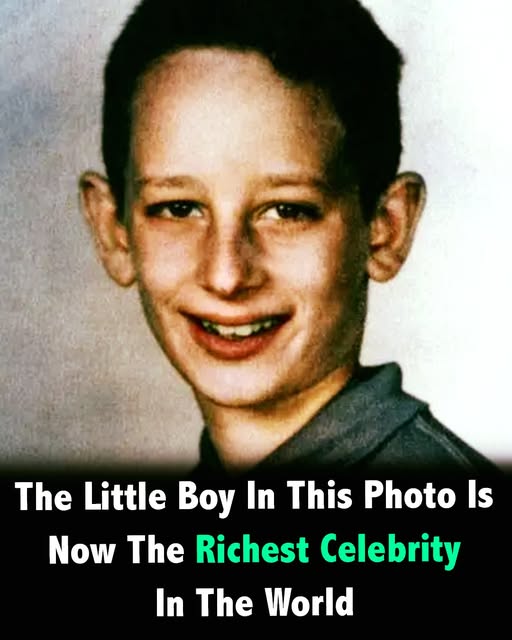At just three years old, he staged a tiny train crash using his Lionel model set, captivated by the drama of destruction and the excitement of seeing the chaos unfold again and again. Even at that age, he was telling stories—through movement, imagination, and spectacle.
As he grew up, his fascination shifted to World War II. He wasn’t drawn to it because of politics or destruction, but rather because of the deeply human stories of resilience, survival, and bravery. He would spend hours poring over old library archives, digging up reels of footage, and creating imaginary characters who belonged on those very battlefields. This wasn’t a passing interest—it was his way of processing a chaotic world, of understanding heroism and human pain.

At the same time, he was drifting away from his Jewish faith. Born in Cincinnati, Ohio, on December 18, 1946, he came from a deeply Orthodox Jewish family. His grandparents had immigrated from Ukraine to escape unrest long before the Holocaust, but growing up in its shadow deeply affected him. He once confessed, “It isn’t something I enjoy admitting, but when I was seven, eight, nine years old, God forgive me, I was embarrassed because we were Orthodox Jews. I was embarrassed by the outward perception of my parents’ Jewish practices. I was never really ashamed to be Jewish, but I was uneasy at times.” It would take many years for him to come to terms with his heritage and fully embrace the culture and beliefs he was raised in.
His upbringing was both unique and complex. His mother was a concert pianist who also ran a kosher dairy restaurant, while his father was a brilliant electrical engineer working in early computer technology. Despite their strong roots, the family would eventually break apart. When he was a teenager, his parents divorced—a moment that left a permanent mark on him. He later admitted, “When they separated, I needed a special friend. And I had to use my imagination to take me to places that felt good—places that helped me escape the pain.” His imagination became his safe haven, and eventually his greatest gift. From that pain, he conjured stories, characters, and even aliens—beings who represented loneliness, loss, and the healing power of connection.
After the divorce, his mother stayed in Saratoga with his three sisters, while he moved to Los Angeles with his father. For years, he blamed his father for the split, not knowing that it was actually his mother who had been unfaithful. This misunderstanding would influence his early films, where recurring themes of absent fathers, fractured families, and children seeking love and belonging became central storytelling elements.
It’s hard to connect the black-and-white childhood photos of this boy to the titan of Hollywood he would eventually become. But those early moments—the confusion, the pain, the wild imagination—were all pieces of a much larger story. As a teen, he began making short films, pouring his emotions and ideas into a camera lens. At just 17 years old, he directed his first feature, Firelight, with only $500. It played for one night, and made just $1 in profit—but it was a start. That small moment marked the beginning of a career that would change the film industry forever.
By 1969, at only 22 years old, he had already become the youngest filmmaker to sign a long-term contract with a major Hollywood studio. His short film Amblin had wowed executives and audiences alike, and from there, he skyrocketed. In the following years, he directed a string of blockbuster hits that would become permanent fixtures in pop culture: Jaws, E.T., Indiana Jones, and Jurassic Park, just to name a few. These weren’t just movies—they were phenomena. They shaped how audiences experienced cinema.
His work didn’t just capture imaginations—it generated billions. Spielberg’s films have earned more than $10 billion worldwide, making him not only a creative force but a financial juggernaut. According to Forbes, he’s now worth an estimated $5.3 billion—placing him ahead of stars like Oprah Winfrey, Michael Jordan, and even George Lucas. And his financial empire extends far beyond the silver screen. Thanks to a unique deal with Universal Studios, Spielberg earns 2% of all ticket sales from their theme parks—a figure that continues to grow, especially with new expansions like the Epic Universe park on the horizon.
While Jurassic Park holds the title as his highest-grossing film at $1.058 billion, many of his other iconic works are not far behind. E.T. brought in $797.3 million, and Indiana Jones and the Kingdom of the Crystal Skull earned $786.6 million. But interestingly, some of his most beloved and critically acclaimed movies—like Schindler’s List, Raiders of the Lost Ark, and Catch Me If You Can—don’t even make the top ten in box office earnings. They remain cultural and emotional landmarks nonetheless, praised for their storytelling, artistry, and emotional depth.
In 1994, Spielberg first appeared on the Forbes list of America’s wealthiest individuals, and he hasn’t left it since. With every new project, he continues to shape the future of film. He’s not just directing movies—he’s influencing the industry itself, setting trends and redefining success with each release. More than five decades into his career, his ability to connect with audiences has only grown stronger.
So who is this boy who once crashed toy trains, embarrassed by his heritage, dreaming of far-off galaxies and haunted by family turmoil? He is Steven Spielberg. A man whose imagination, fueled by both wonder and pain, has given the world unforgettable stories. His journey from a lonely child with a camera to a billionaire filmmaker is a testament to what passion, creativity, and relentless vision can achieve. Spielberg didn’t just make movies—he made magic.





